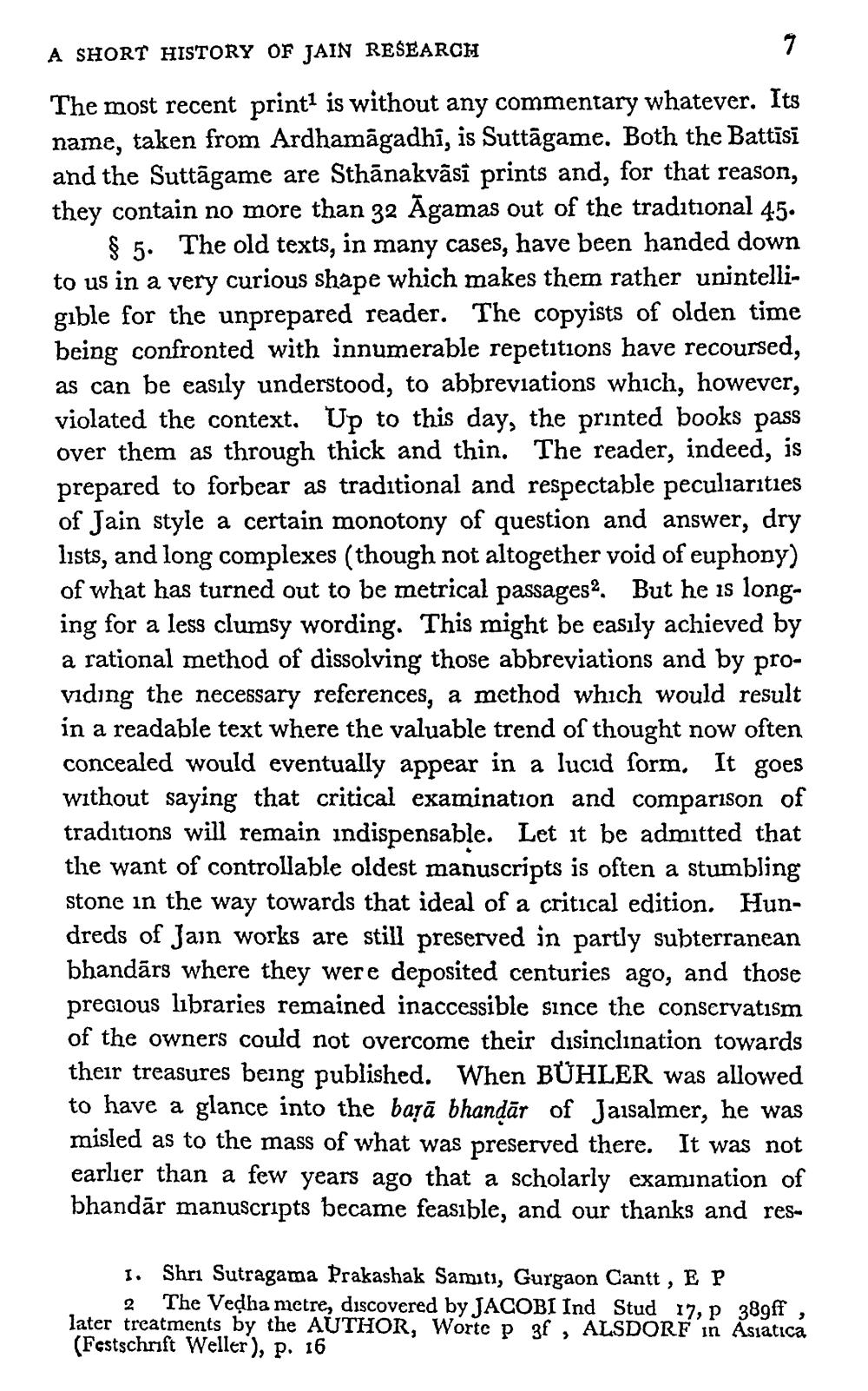________________
A SHORT HISTORY OF JAIN RESEARCH The most recent printi is without any commentary whatever. Its name, taken from Ardhamāgadhi, is Suttāgame. Both the Battīsī and the Suttāgame are Sthānakvāsī prints and, for that reason, they contain no more than 32 Āgamas out of the traditional 45.
$ 5. The old texts, in many cases, have been handed down to us in a very curious shape which makes them rather unintelligible for the unprepared reader. The copyists of olden time being confronted with innumerable repetitions have recoursed, as can be easily understood, to abbreviations which, however, violated the context, Up to this day, the printed books pass over them as through thick and thin. The reader, indeed, is prepared to forbcar as traditional and respectable peculiarities of Jain style a certain monotony of question and answer, dry lists, and long complexes (though not altogether void of euphony) of what has turned out to be metrical passages?. But he is longing for a less clumsy wording. This might be easily achieved by a rational method of dissolving those abbreviations and by providing the necessary references, a method which would result in a readable text where the valuable trend of thought now often concealed would eventually appear in a lucid form. It goes without saying that critical examination and comparison of traditions will remain indispensable. Let it be admitted that the want of controllable oldest manuscripts is often a stumbling stone in the way towards that ideal of a critical edition. Hundreds of Jain works are still preserved in partly subterranean bhandārs where they were deposited centuries ago, and those precious libraries remained inaccessible since the conservatism of the owners could not overcome their disinclination towards their treasures being published. When BÜHLER was allowed to have a glance into the barā bhandār of Jaisalmer, he was misled as to the mass of what was preserved there. It was not earlier than a few years ago that a scholarly examination of bhandār manuscripts became feasible, and our thanks and res
1. Shri Sutragama Prakashak Samiti, Gurgaon Cantt , E P
The Vedha metre, discovered by JACOBI Ind Stud 17, P 389ff , later treatments by the AUTHOR, Worte p 3f , ALSDORF in Asiatica (Festschrift Weller), p. 16




